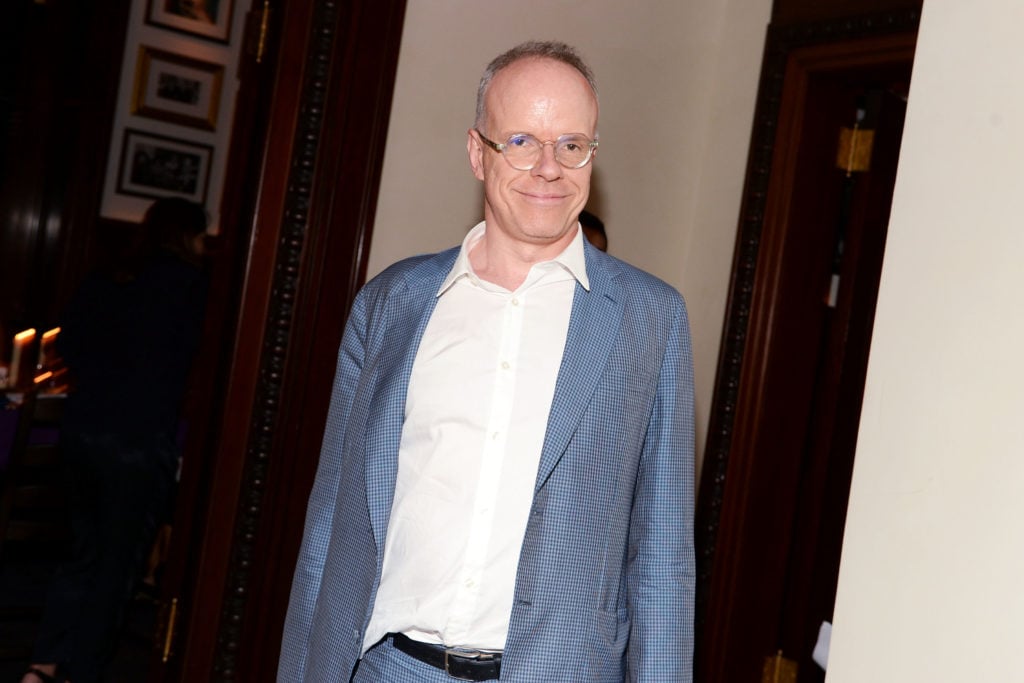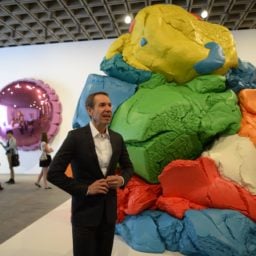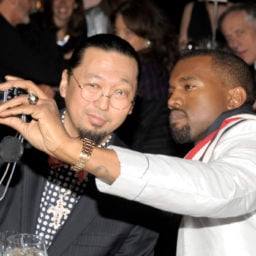How Millennials Are Changing Corporate Art Collections

For
centuries after Siena’s Monte dei Paschi bank founded the first
corporate art collection in 1472, the direction of these programs was
primarily dictated by the personal passions of the boss. Even in the
1960s, when companies like Chase Manhattan and IBM began to fill their
offices with works by Barbara Kruger, Sam Francis, and Eric Fischl, corporate collections were still primarily offshoots of the CEO’s artistic tastes.
Throughout the following decades, as interest in corporate collecting swelled, things began to change—instead of the boss’s pet project, a company’s trove of art became a public relations tool that communicated prestige and good taste to clients. Since the early 2000s, corporate collecting has shifted its focus inward once again. This time, however, the art is meant to serve the workers by enhancing the office environment and reflecting company values. And for employers hoping to cater to younger recruits, the focus is increasingly on a millennial-friendly ethos of social responsibility.
According to a 2014 Brookings report, 63% of millennials want their employers to contribute to meaningful social or ethical causes. By comparison, about half the members of older generations share this stipulation. As millennials begin to dominate the workforce, the report notes that these proclivities “are already changing consumer markets and forcing corporations to change their workplace practices.”
Enter ArtLifting, a Boston-based company founded in 2013 by siblings Liz and Spencer Powers. The initiative was spurred by a problem that Liz discovered while working with art programs in homeless shelters—once completed, there was nowhere for the work to go. Today, the startup offers an online platform for artists living with homelessness or disability to sell their work to a global audience. When Liz presented at the offices of the Boston Consulting Group (BCG), ArtLifting’s combination of high-quality art and community outreach had a clear appeal as a way to build the company’s collection.
“It sounded like a great fit for a company like BCG, which tries to be socially responsible,” said Karen Hood, office manager for the company’s Center for Knowledge & Analytics in Boston. “We wanted to support them and see how we could partner with them. Large companies oftentimes work with generous budgets and want to be able to spend responsibly and have an impact.” Hood is in the process of buying several works from ArtLifting artists and commissioning one more for a recently completed office build-out.
Throughout the following decades, as interest in corporate collecting swelled, things began to change—instead of the boss’s pet project, a company’s trove of art became a public relations tool that communicated prestige and good taste to clients. Since the early 2000s, corporate collecting has shifted its focus inward once again. This time, however, the art is meant to serve the workers by enhancing the office environment and reflecting company values. And for employers hoping to cater to younger recruits, the focus is increasingly on a millennial-friendly ethos of social responsibility.
According to a 2014 Brookings report, 63% of millennials want their employers to contribute to meaningful social or ethical causes. By comparison, about half the members of older generations share this stipulation. As millennials begin to dominate the workforce, the report notes that these proclivities “are already changing consumer markets and forcing corporations to change their workplace practices.”
Enter ArtLifting, a Boston-based company founded in 2013 by siblings Liz and Spencer Powers. The initiative was spurred by a problem that Liz discovered while working with art programs in homeless shelters—once completed, there was nowhere for the work to go. Today, the startup offers an online platform for artists living with homelessness or disability to sell their work to a global audience. When Liz presented at the offices of the Boston Consulting Group (BCG), ArtLifting’s combination of high-quality art and community outreach had a clear appeal as a way to build the company’s collection.
“It sounded like a great fit for a company like BCG, which tries to be socially responsible,” said Karen Hood, office manager for the company’s Center for Knowledge & Analytics in Boston. “We wanted to support them and see how we could partner with them. Large companies oftentimes work with generous budgets and want to be able to spend responsibly and have an impact.” Hood is in the process of buying several works from ArtLifting artists and commissioning one more for a recently completed office build-out.

ArtLifting’s
mission also resonated with Google—so much so that the two companies
announced a partnership last month, Art@Google. The program’s inaugural
show opened on October 13th, repurposing an event space on the internet
giant’s Cambridge campus to serve as a gallery. The first exhibition
showcases the delicate pen-and-ink drawings of Scott Benner,
a Boston-based artist who developed Horner’s syndrome in 2012 and
subsequently lost his job and home. He began selling his art on
ArtLifting in 2014 and has since found housing; for this show, Google
acquired nine of Benner’s works. Google plans to feature two additional
local ArtLifting artists in Cambridge next year with the hope of
expanding the program to its other campuses across the country.
“Our mission with Google is to create amazing work environments and experiences that help Googlers perform at their best every day,” said Google real estate project executive John Moran, who worked with ArtLifting to develop the Art@Google program. “We look to find ways to enhance the campus and create experiences that make this an interesting place to work.” According to studies, a focus on experiences rather than consumer goods is another hallmark of the millennial workforce—and Google, with its median age of 29, employs a lot of them.
Shirley Reiff Howarth, who has been studying corporate art collections since 1983 as the founder and editor of the International Directory of Corporate Art Collections, notes that over the past decade there has also been a growing interest across corporations in creating community-oriented programs like Art@Google. “The big focus change I’m seeing is that corporate collecting seems to be moving away from just buying a lot of unrelated art and hanging it on the walls,” she said. “Instead, companies are moving into integrated programs that try to educate the employees and build a context, perhaps by collecting on thematic grounds. And they’re partnering with local arts communities.”
Although Howarth says this trend is currently more prominent outside the U.S.—particularly in places like Europe, South Africa, and Asia—as millennials enter the workforce in increasing numbers, companies like BCG and Google are at the forefront of a practice that promises to be increasingly common.
“Our mission with Google is to create amazing work environments and experiences that help Googlers perform at their best every day,” said Google real estate project executive John Moran, who worked with ArtLifting to develop the Art@Google program. “We look to find ways to enhance the campus and create experiences that make this an interesting place to work.” According to studies, a focus on experiences rather than consumer goods is another hallmark of the millennial workforce—and Google, with its median age of 29, employs a lot of them.
Shirley Reiff Howarth, who has been studying corporate art collections since 1983 as the founder and editor of the International Directory of Corporate Art Collections, notes that over the past decade there has also been a growing interest across corporations in creating community-oriented programs like Art@Google. “The big focus change I’m seeing is that corporate collecting seems to be moving away from just buying a lot of unrelated art and hanging it on the walls,” she said. “Instead, companies are moving into integrated programs that try to educate the employees and build a context, perhaps by collecting on thematic grounds. And they’re partnering with local arts communities.”
Although Howarth says this trend is currently more prominent outside the U.S.—particularly in places like Europe, South Africa, and Asia—as millennials enter the workforce in increasing numbers, companies like BCG and Google are at the forefront of a practice that promises to be increasingly common.

“We
saw in this an opportunity to use art as a way of engaging the
community, to get them exposed to an organization that we thought was
doing something interesting in this particular community,” Moran said.
“It’s about highlighting something that was started here in the Boston
area, bringing it into the campus to expand that exposure to our Google
community and to see what comes of that.”
Google has been ranked the best company to work for by Fortune seven times in the last decade; BCG has also ranked consistently in the top three. “That just illustrates the point that our clients are buying artwork both because they find it beautiful and because their employees, clients, and customers understand that art is more than just decoration,” said Spencer, ArtLifting’s co-founder and CEO. “It can provide a moral boost. For these companies who are trying to recruit the best and brightest, and they’ve found that ArtLifting art helps them do that. Our artwork isn’t just art—it has a compelling story behind it.”
Hood agrees. Her previous purchases for the BCG office included works by up-and-coming artists, but Hood said she “barely knew anything” about their background. With ArtLifting, however, the artists’ stories are foregrounded in a way that improves the office environment.
“I didn’t feel that my purchasing the artwork was helping them other than their bottom line. I feel like the pieces we’re selecting now really impact someone else’s life,” Hood said. “It feels good to look at something that’s pleasing to the eye, but also pleasing to the soul.”
—Abigail Cain
Google has been ranked the best company to work for by Fortune seven times in the last decade; BCG has also ranked consistently in the top three. “That just illustrates the point that our clients are buying artwork both because they find it beautiful and because their employees, clients, and customers understand that art is more than just decoration,” said Spencer, ArtLifting’s co-founder and CEO. “It can provide a moral boost. For these companies who are trying to recruit the best and brightest, and they’ve found that ArtLifting art helps them do that. Our artwork isn’t just art—it has a compelling story behind it.”
Hood agrees. Her previous purchases for the BCG office included works by up-and-coming artists, but Hood said she “barely knew anything” about their background. With ArtLifting, however, the artists’ stories are foregrounded in a way that improves the office environment.
“I didn’t feel that my purchasing the artwork was helping them other than their bottom line. I feel like the pieces we’re selecting now really impact someone else’s life,” Hood said. “It feels good to look at something that’s pleasing to the eye, but also pleasing to the soul.”
—Abigail Cain

























